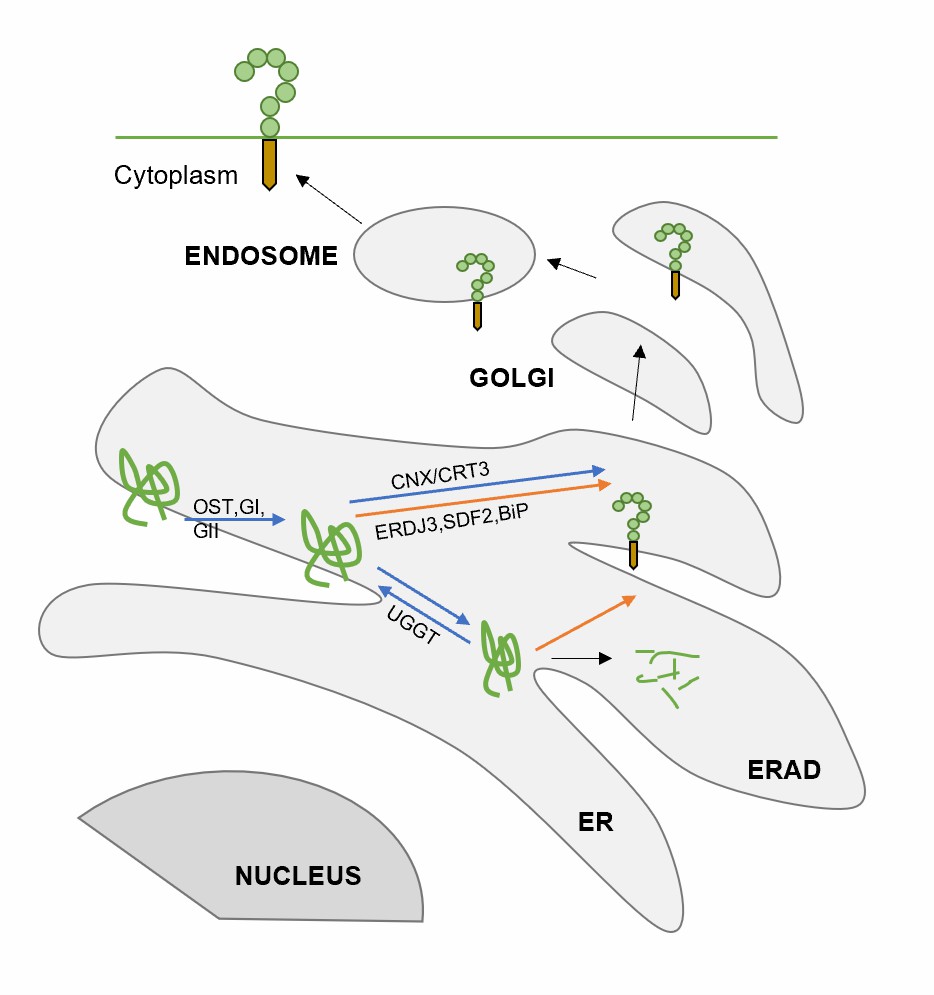We use cookies to understand how you use our site and to improve the overall user experience. This includes personalizing content and advertising. Read our Privacy Policy
An important aspect of innate immunity in eukaryotes involves rapidly detecting non-self-structures originating from potential microbial invaders. Plants monitor encounters with potential threats derived from surrounding microbes by using two classes of immune receptors, the first is pattern recognition receptors (PRRs) that directly recognize their cognate microbe-associated molecular patterns (MAMPs), and the second is disease resistance (R) proteins that recognize the actions or structures of isolate/strain-specific pathogen effectors.
Lifeasible offers comprehensive services covering a wide range of cutting-edge technologies to advance your projects. Our scientists have developed a series of innovative solutions to help analyze the role of plant endoplasmic reticulum in innate immunity.
 Fig.1. Processing of receptor kinases via the lectin and luminal-binding protein (BiP) chaperone complex.
Fig.1. Processing of receptor kinases via the lectin and luminal-binding protein (BiP) chaperone complex.
Lifeasible has extensive experience and expertise in plant science. We are committed to providing you with timely and high-quality deliverables. At the same time, we guarantee the cost-effectiveness, completeness, and simplicity of the report. If you are interested in our services or have any questions, please feel free to contact us or make an online inquiry.
Get Latest Lifeasible News and Updates Directly to Your Inbox
Mechanisms Regulating Plant Chloroplast Biogenesis
April 15, 2025
We use cookies to understand how you use our site and to improve the overall user experience. This includes personalizing content and advertising. Read our Privacy Policy